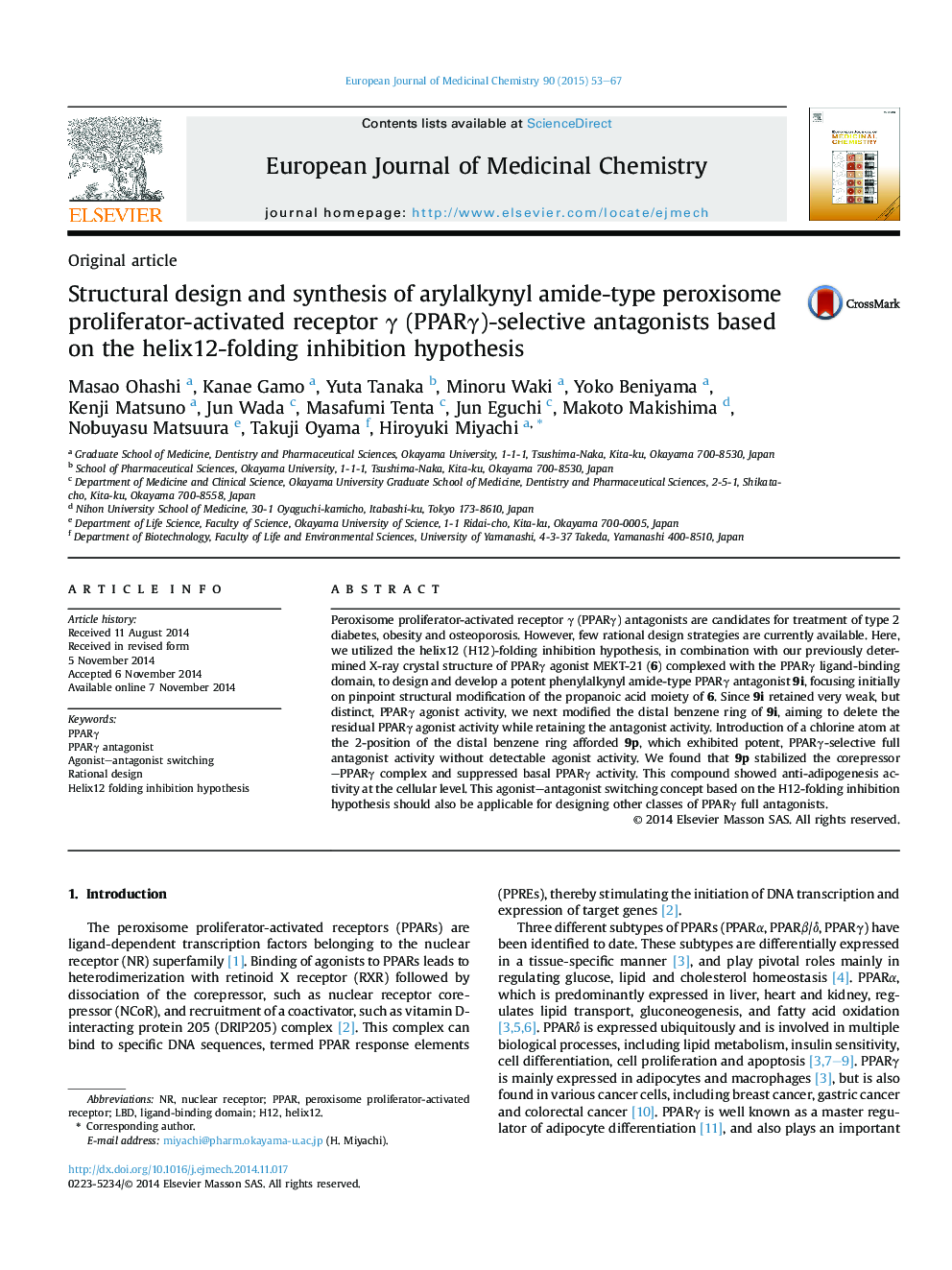| Article ID | Journal | Published Year | Pages | File Type |
|---|---|---|---|---|
| 1395477 | European Journal of Medicinal Chemistry | 2015 | 15 Pages |
•We adopted an agonist–antagonist switching strategy to design PPARγ antagonists.•A rigid and bulky distal structure is important for PPARγ antagonist activity.•Arylalkynyl amide analogs exhibited potent PPARγ antagonist activity.•9p functioned as a PPARγ–selective antagonist with inverse agonist character.
Peroxisome proliferator-activated receptor γ (PPARγ) antagonists are candidates for treatment of type 2 diabetes, obesity and osteoporosis. However, few rational design strategies are currently available. Here, we utilized the helix12 (H12)-folding inhibition hypothesis, in combination with our previously determined X-ray crystal structure of PPARγ agonist MEKT-21 (6) complexed with the PPARγ ligand-binding domain, to design and develop a potent phenylalkynyl amide-type PPARγ antagonist 9i, focusing initially on pinpoint structural modification of the propanoic acid moiety of 6. Since 9i retained very weak, but distinct, PPARγ agonist activity, we next modified the distal benzene ring of 9i, aiming to delete the residual PPARγ agonist activity while retaining the antagonist activity. Introduction of a chlorine atom at the 2-position of the distal benzene ring afforded 9p, which exhibited potent, PPARγ-selective full antagonist activity without detectable agonist activity. We found that 9p stabilized the corepressor–PPARγ complex and suppressed basal PPARγ activity. This compound showed anti-adipogenesis activity at the cellular level. This agonist–antagonist switching concept based on the H12-folding inhibition hypothesis should also be applicable for designing other classes of PPARγ full antagonists.
Graphical abstractFigure optionsDownload full-size imageDownload as PowerPoint slide
